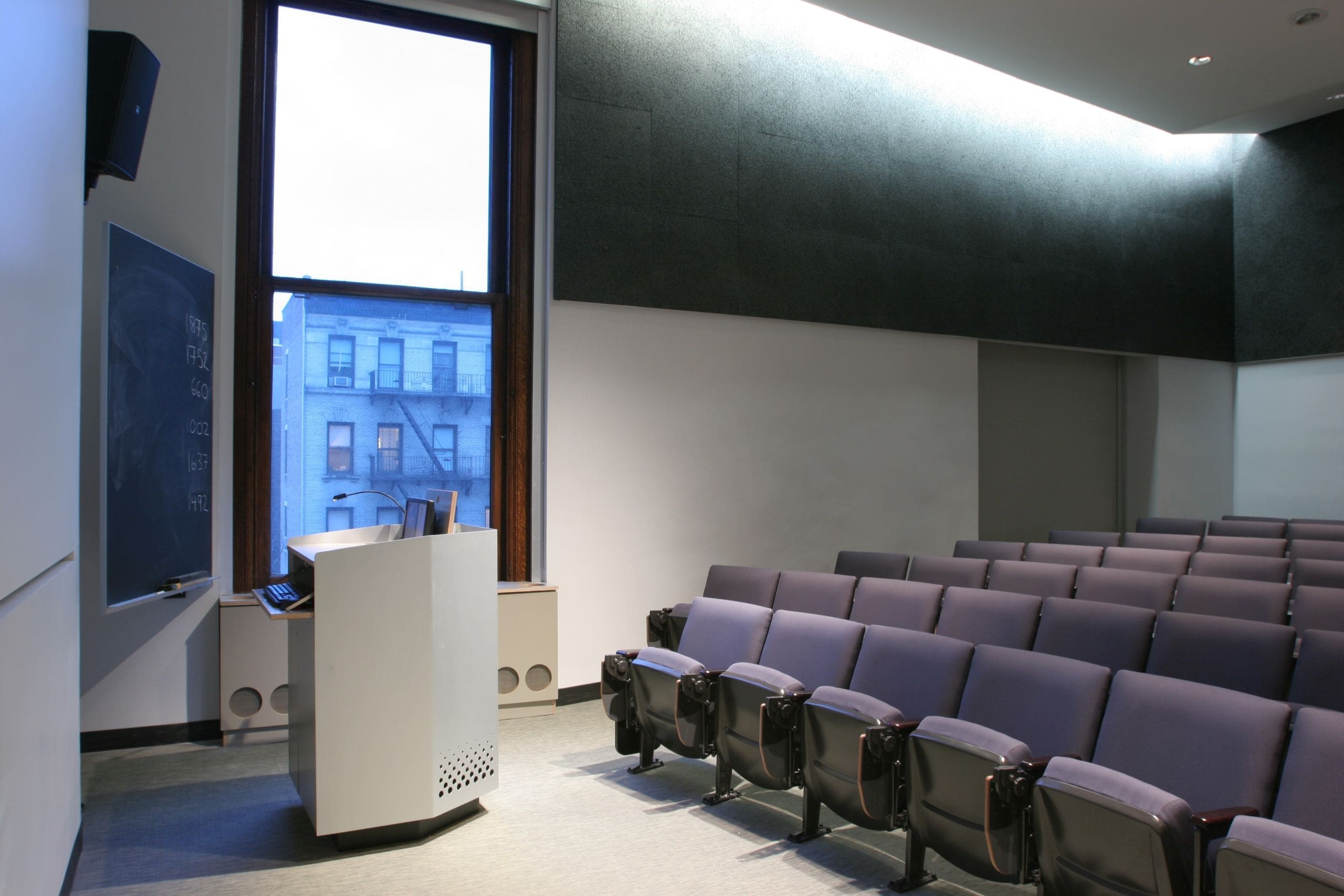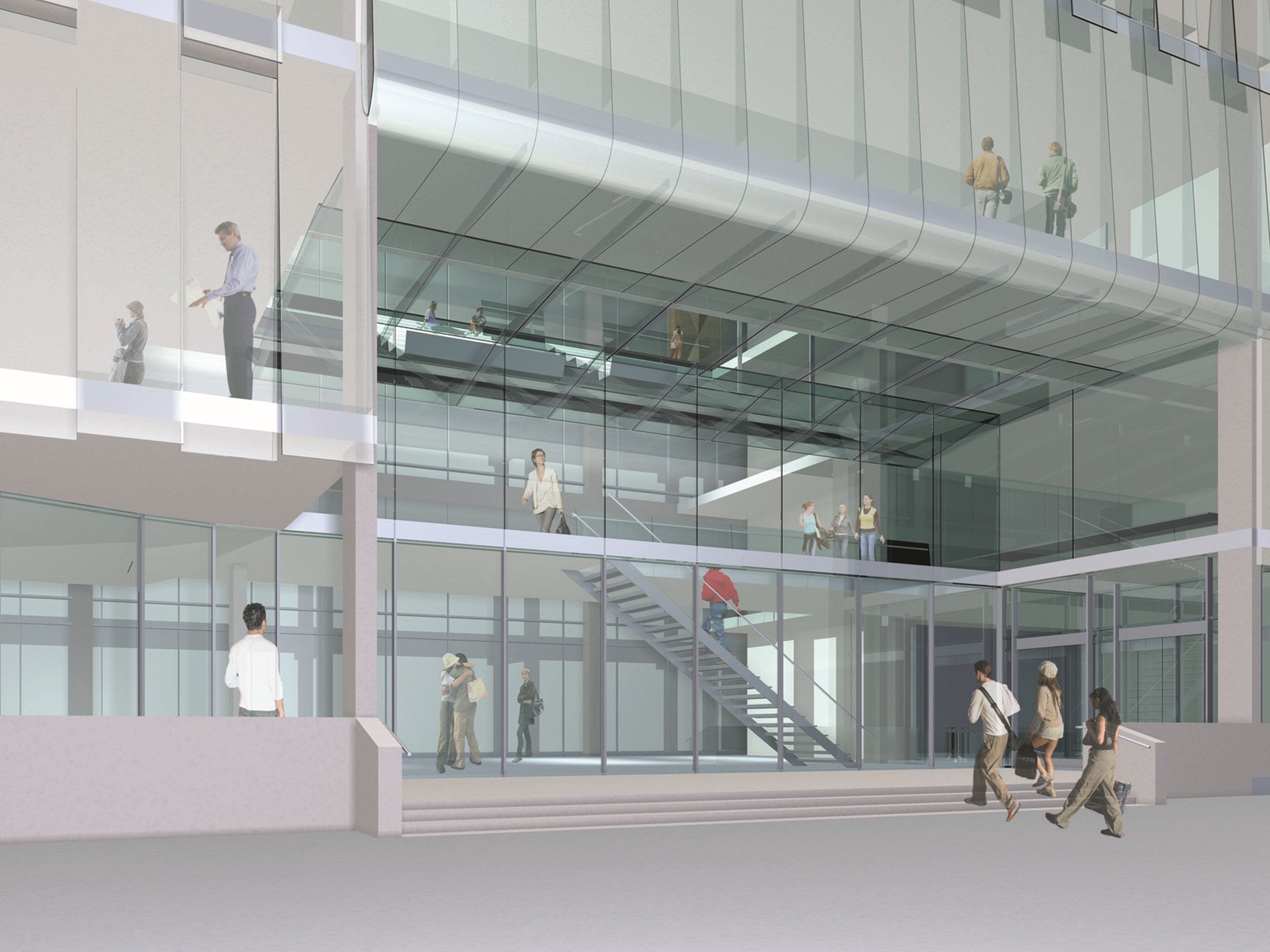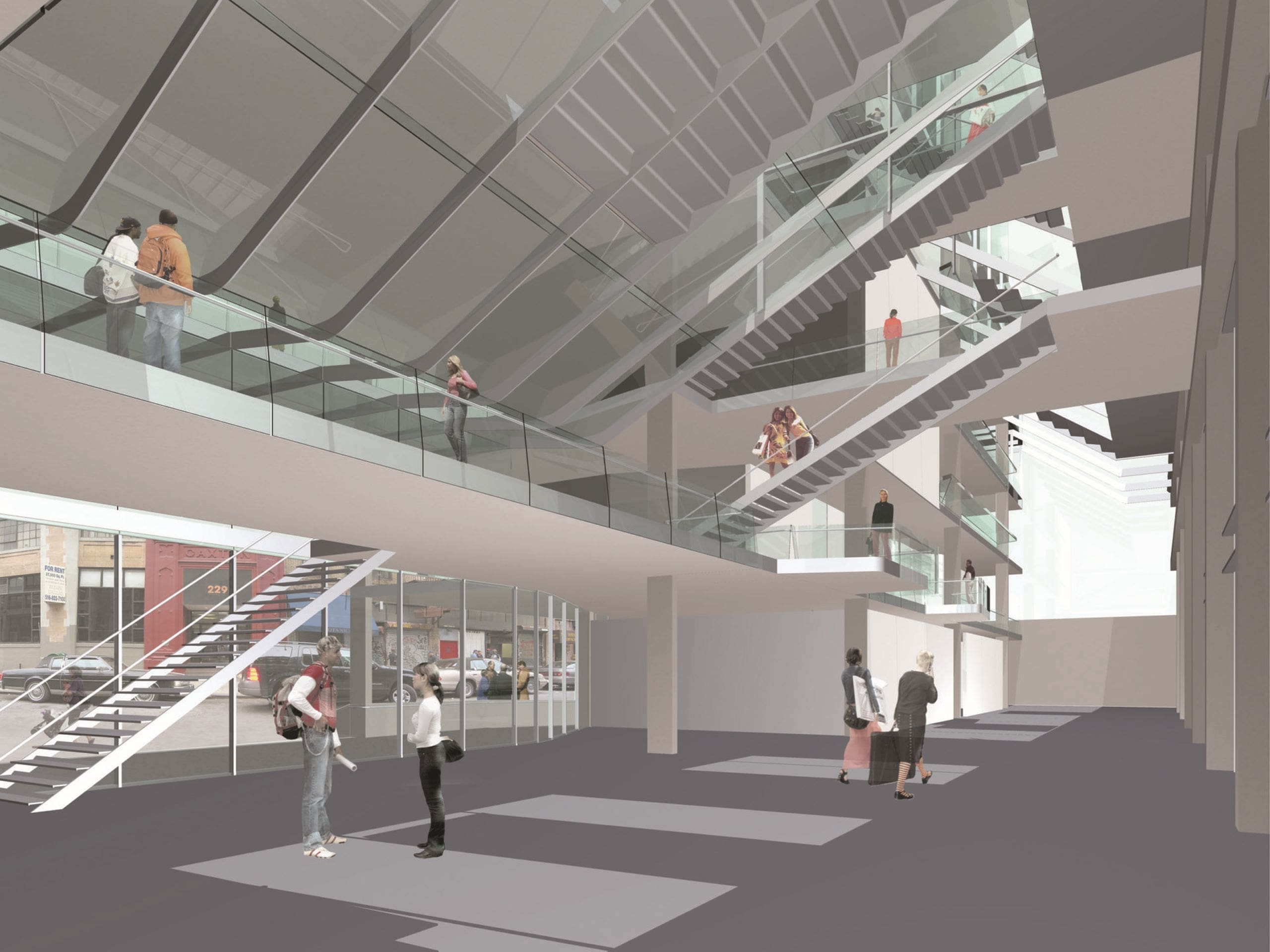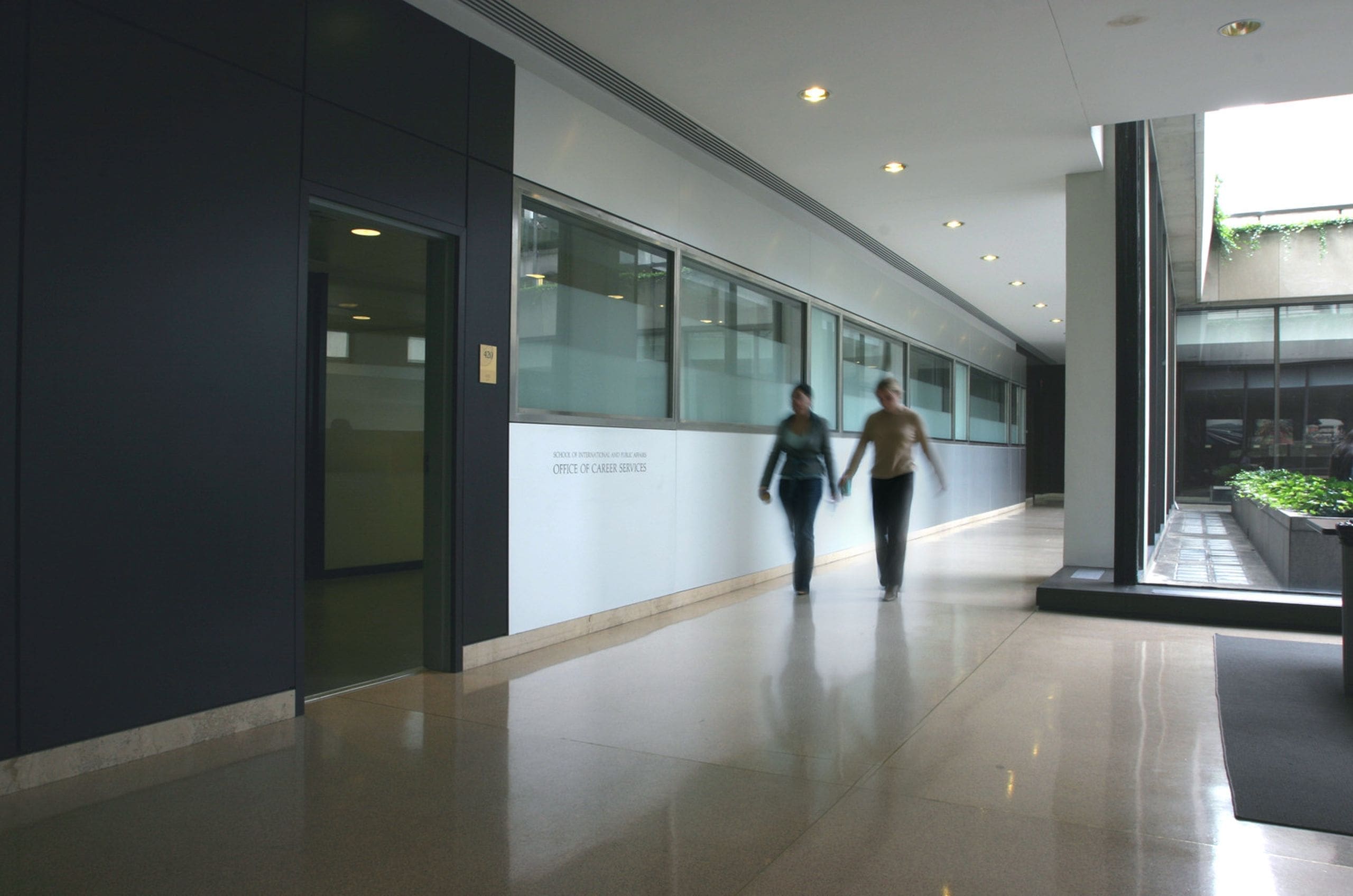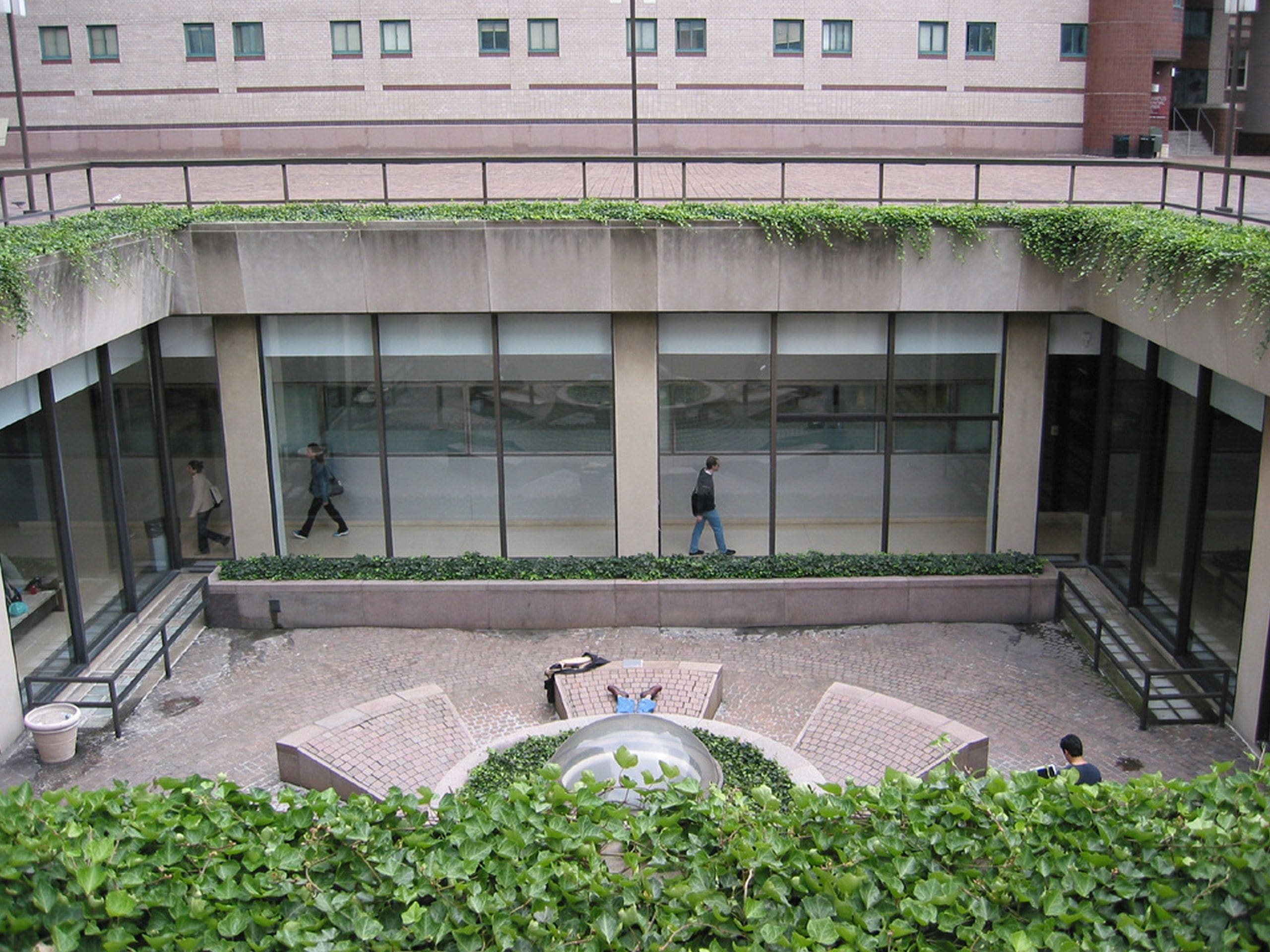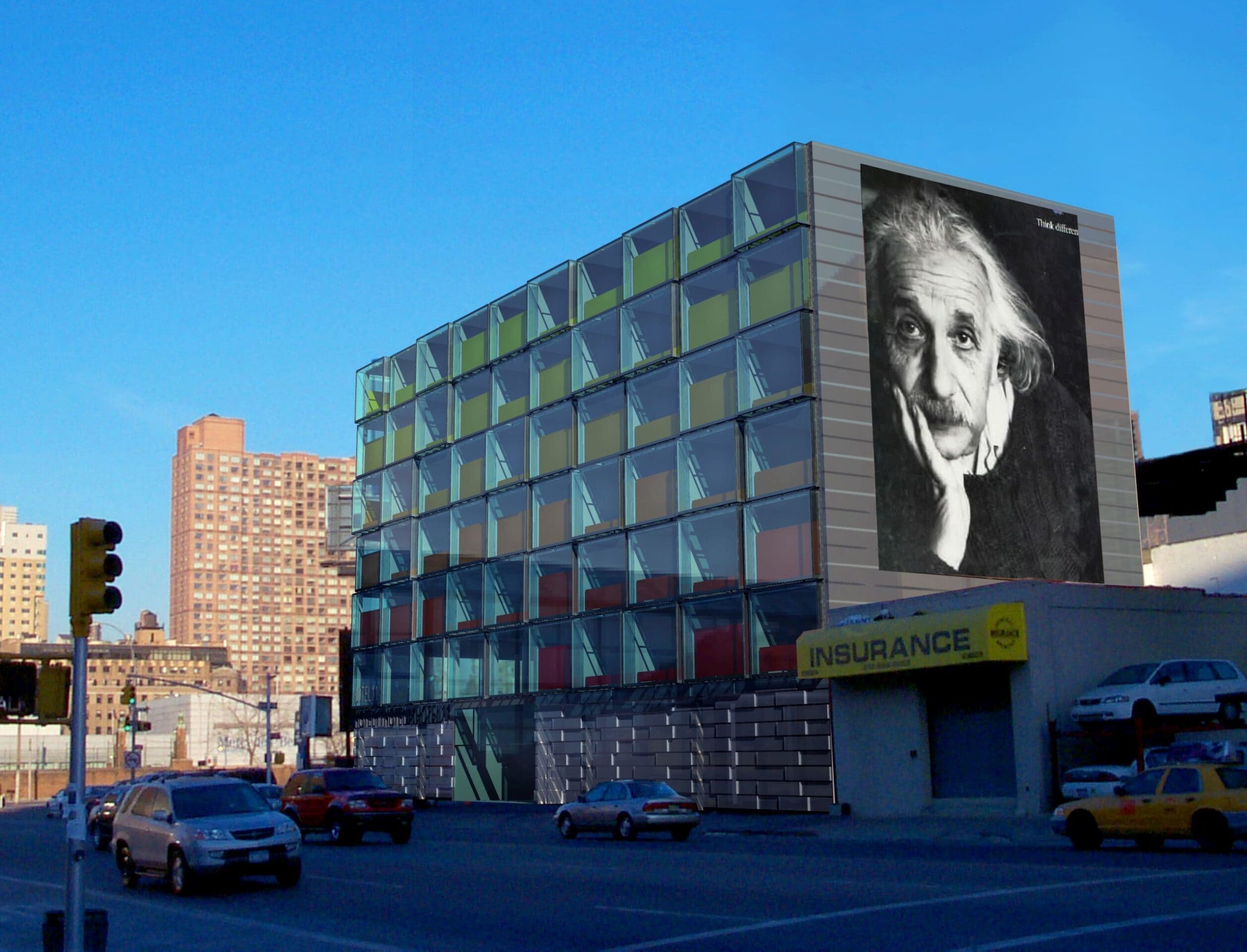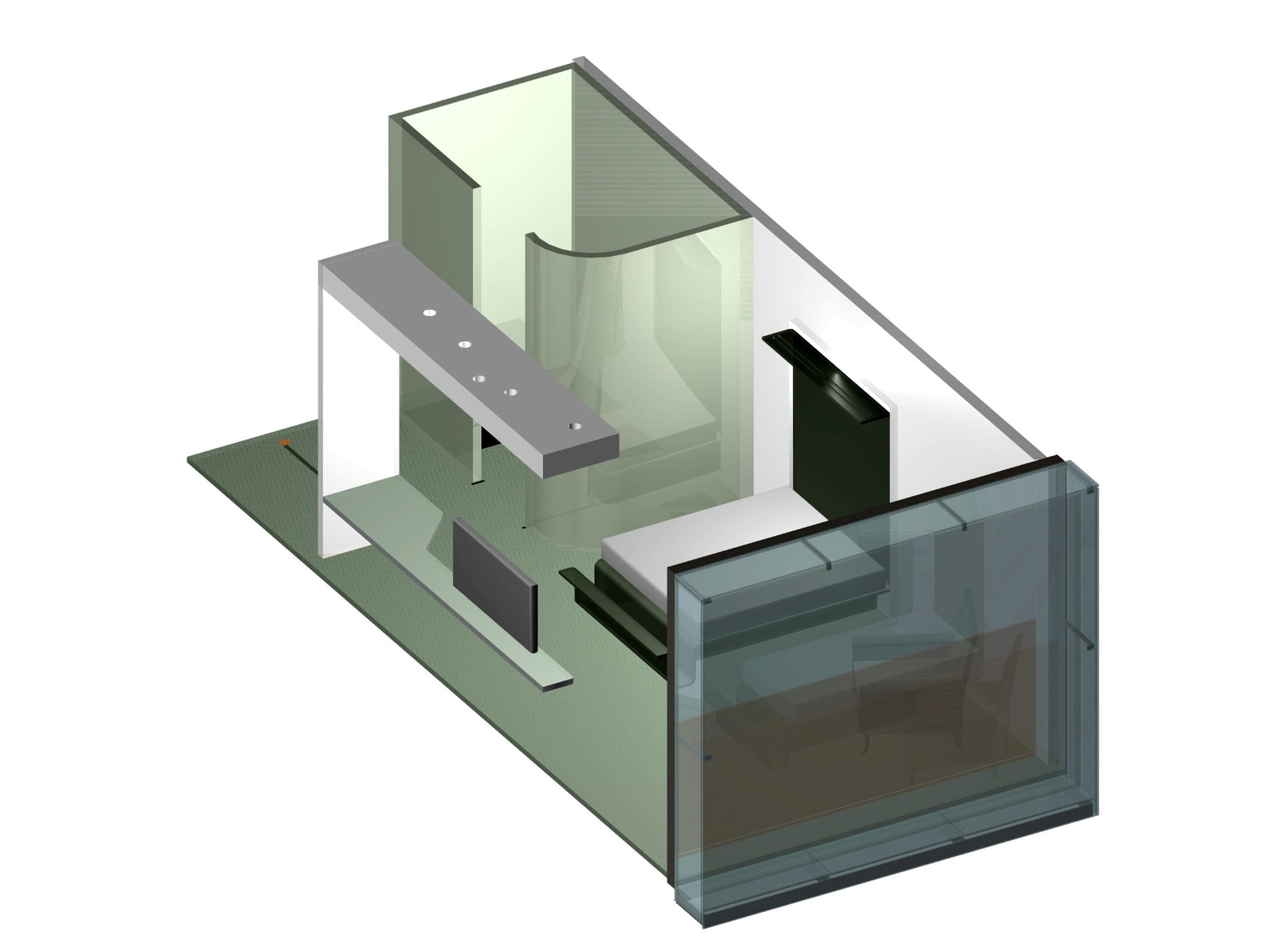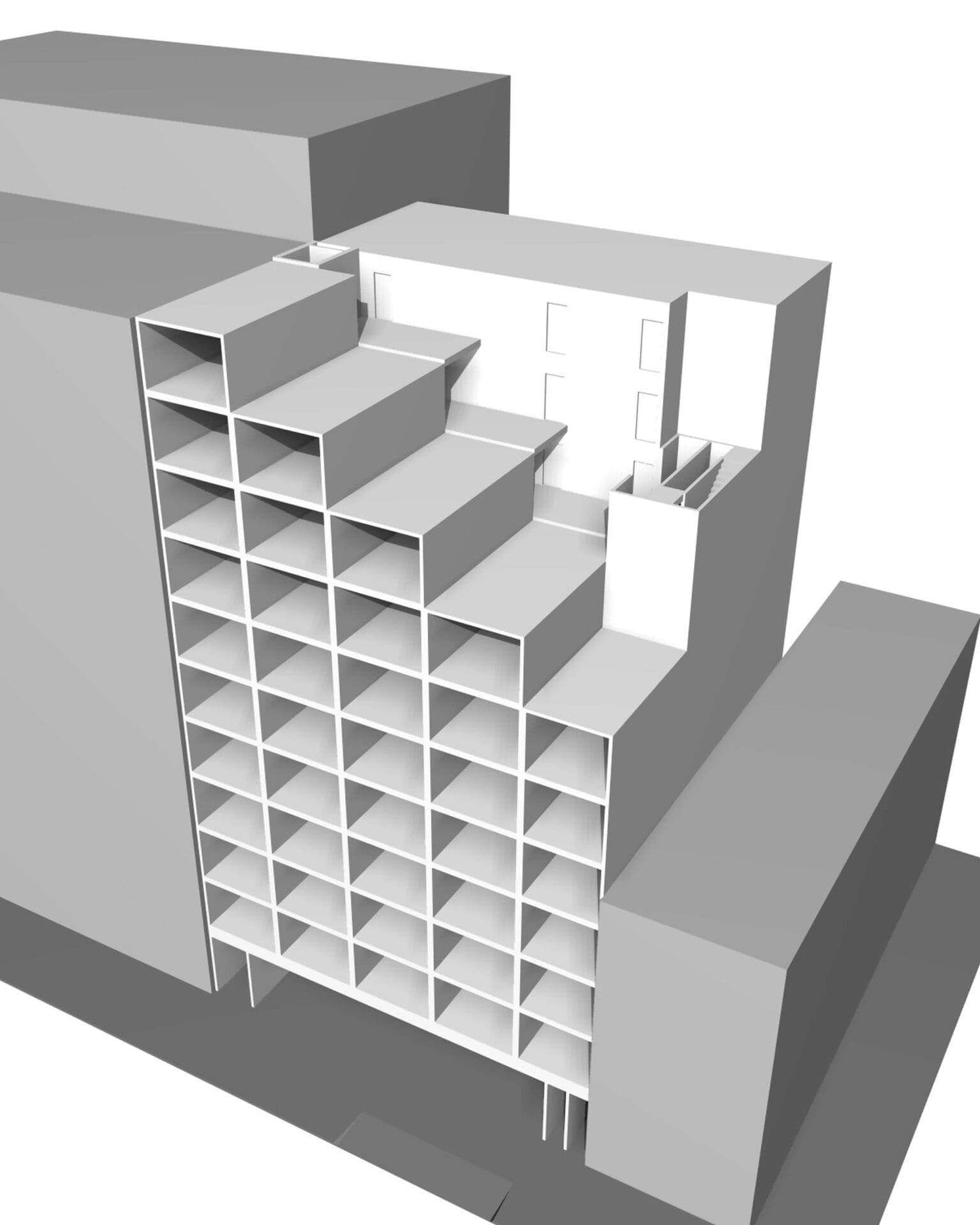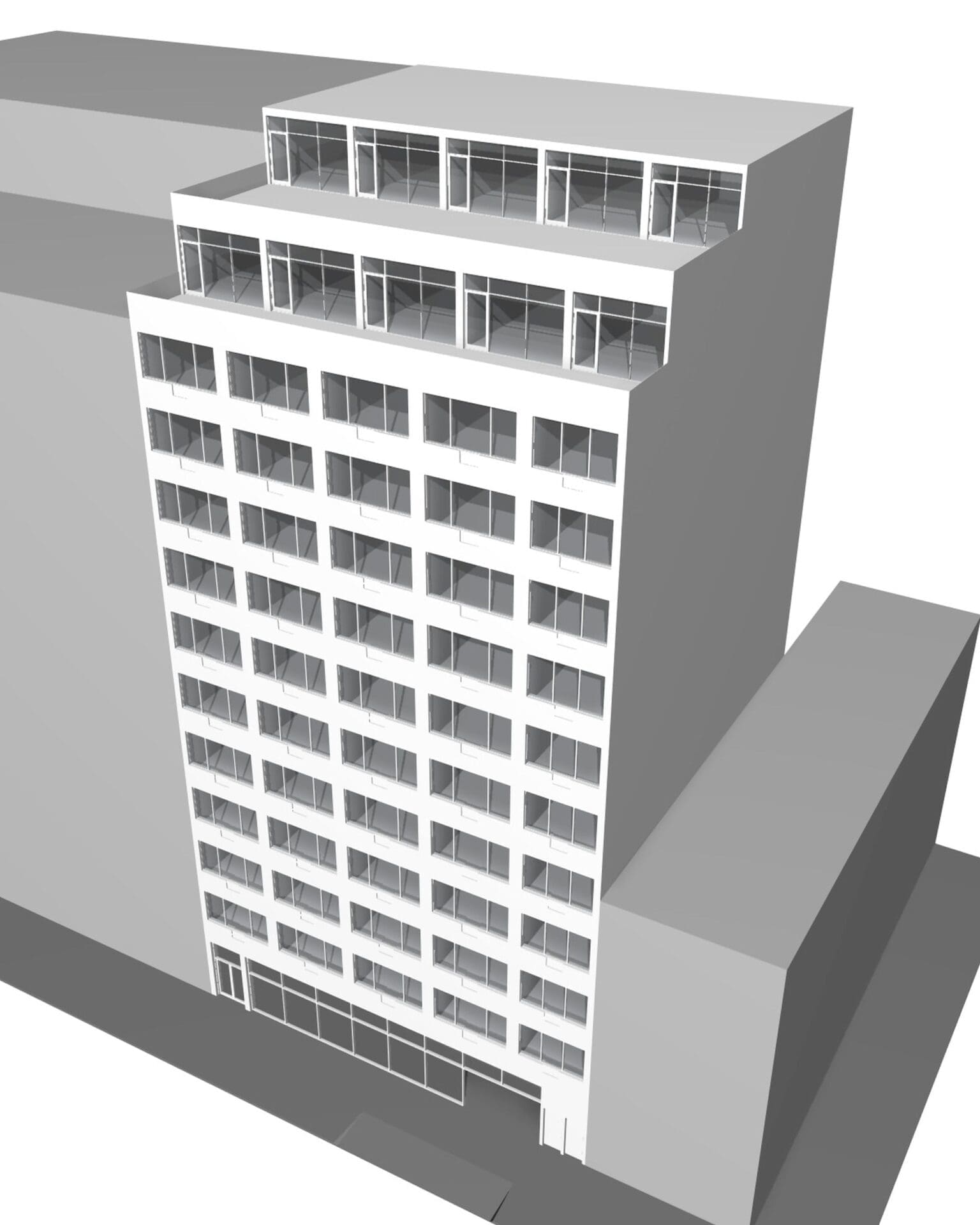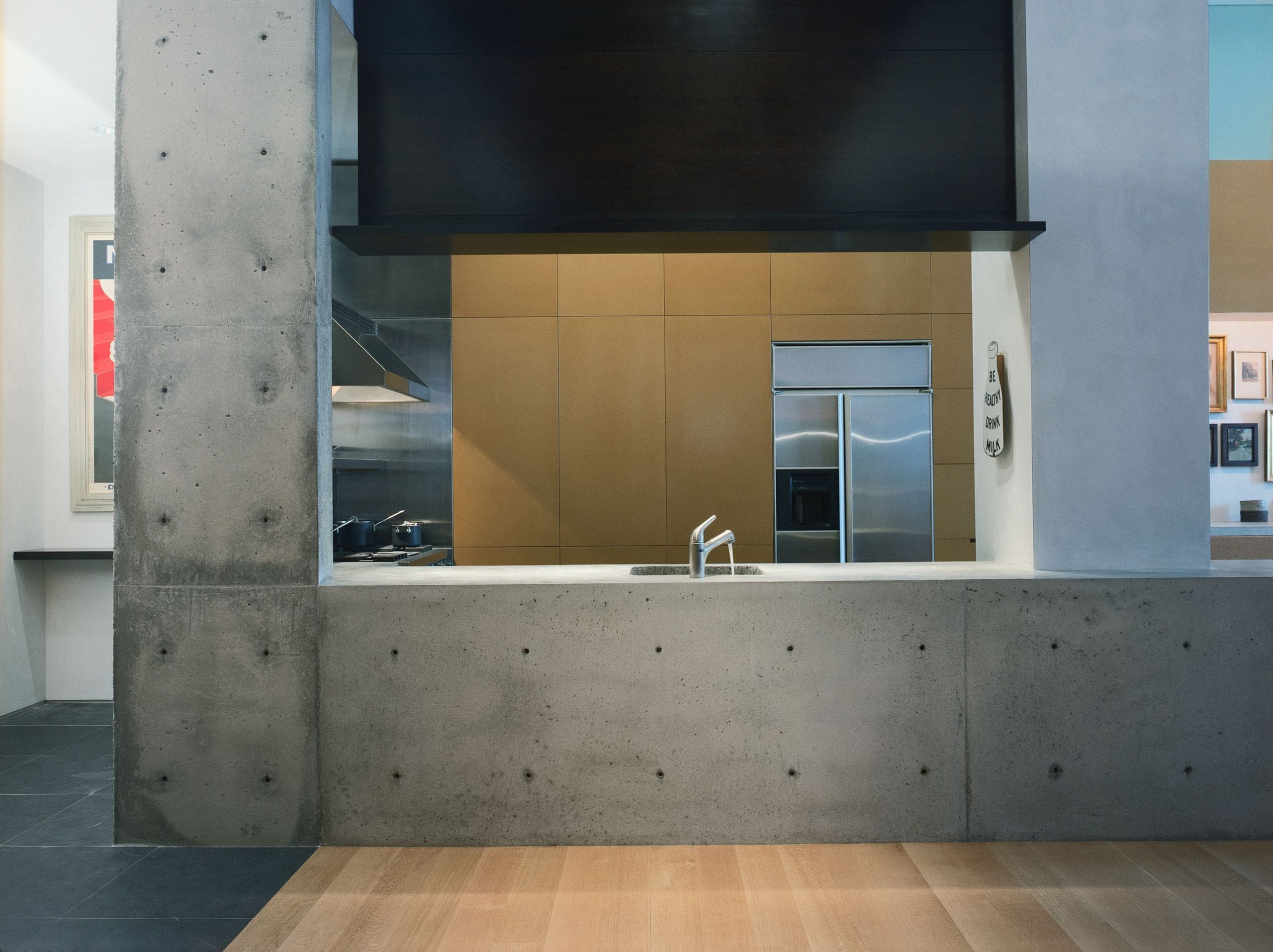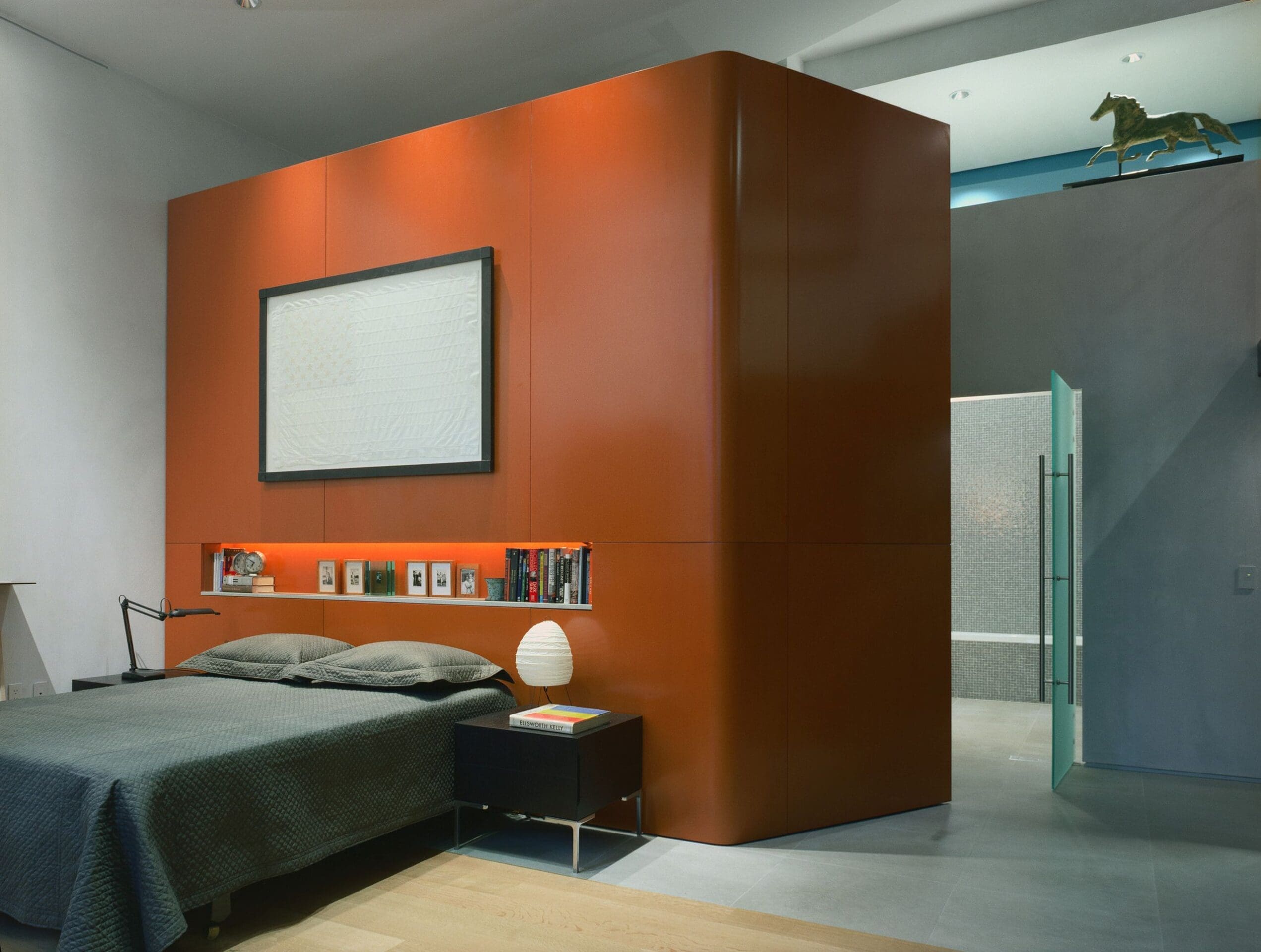Bettman Hall
Department of Art History and Archaeology
This 74-seat auditorium design provides state of the art multi-media capabilities to the Department of Art History and Archaeology at Columbia University and serves as the space for public lectures and important departmental events.
The primary goal was to provide an intimate and flexible teaching environment that would perform equally well for faculty members regardless of their preferences for digital or analog teaching technologies.
The site is on the sixth floor of Schermerhorn Hall with windows to Amsterdam Avenue. The renovation included a sloped floor and new seating while maintaining universal access, reshaping the ceiling and incorporating new lighting and ductwork, addressing sound and light from the existing windows by replacing the glass, and new finishes, furniture, and custom designed podium. Finishes include the use of porous expanded polypropelene bead foam panels for acoustic control and a woven vinyl floor covering.
Location
New York, NY
Client
Columbia University
Year
2004
Size
1,500 sqft
MFA Design Team
Scott Marble, Karen Fairbanks, Jake Nishimura, Stacey Jacovini
Contractor
Arup
Contractor
Deborah Bradley Construction Services
Photography
Gregory Goode Photography
